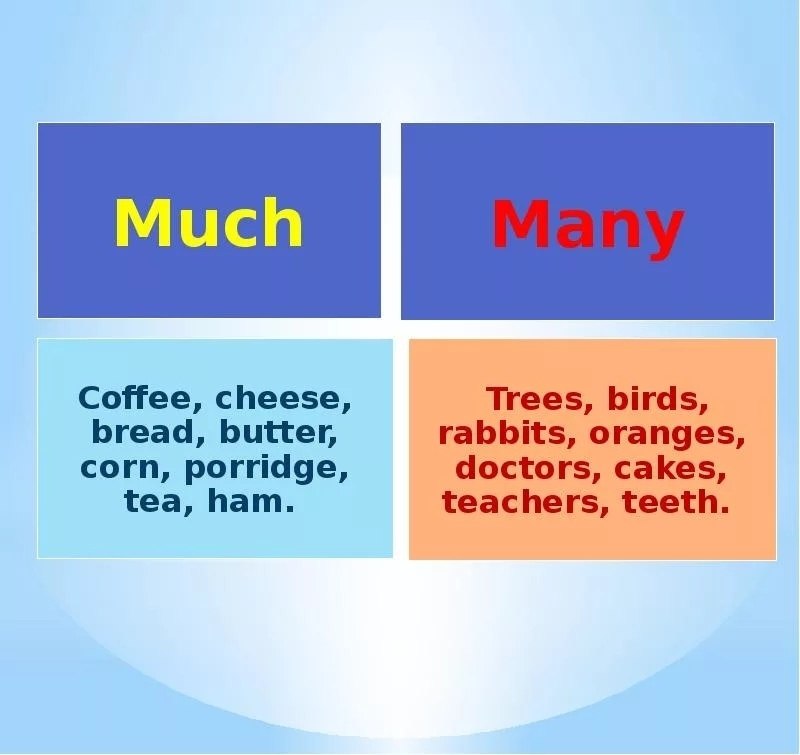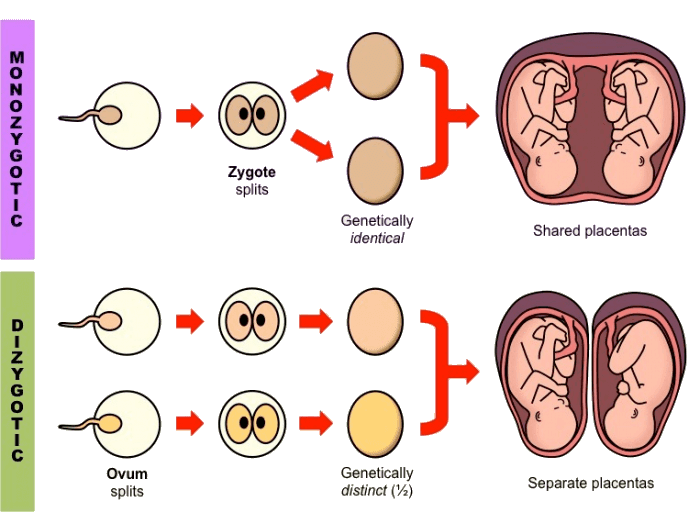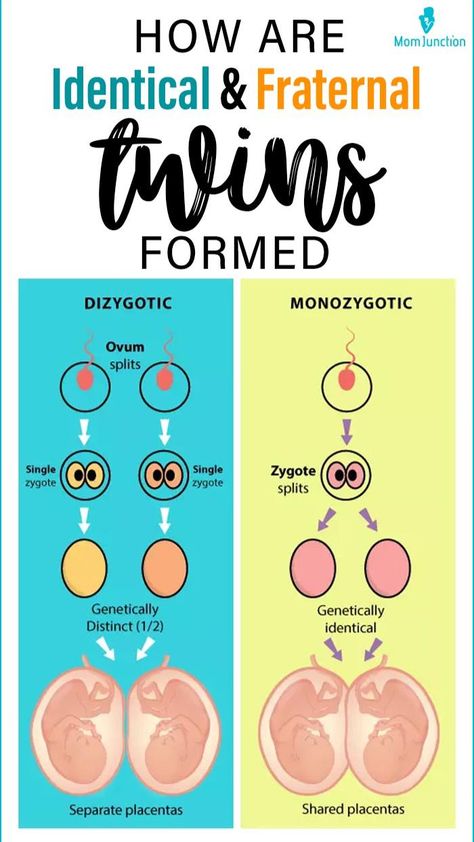How many different kinds of twins are there
Identical, Fraternal, and Other Unique Types
You may be familiar with the most common types of twins — fraternal and identical — but several other rare subtypes exist too.
More twins are born than you might think. As of 2019, the Centers for Disease Control and Prevention (CDC) reported that 32.1 out of every 1,000 births in the United States were twins. Read on for more details about twins.
The National Library of Medicine says that monozygotic, or identical, twins are conceived from one fertilized egg. This egg separates into two embryos after it has begun to divide. These two embryos develop into two babies.
Genetic materials called chromosomes in both babies are completely identical. This is because both babies come from the same egg and sperm. For this reason, both children are assigned the same sex at birth and share the same genetic characteristics, such as eye and hair color.
Still, because of differences in the environment where they’re born (like the amount of space each had in the uterus), identical twins may have slight differences in appearance.
Not all twins are identical, of course. More often than not, twins are born with unique physical characteristics. Nonidentical twins are generally known as fraternal twins.
Fraternal twins
The scientific term for fraternal twins — “dizygotic” — refers to two fertilized eggs. Dizygotic twins happen when the birthing parent’s body releases two eggs at the same time. A different sperm will fertilize each egg.
Since fraternal twins are the result of different eggs and different sperm, they share the same percentage of chromosomes as any other siblings. The National Human Genome Research Institute says that this is about 50 percent. This is why they don’t look exactly alike and can be assigned different sexes at birth.
Traditionally, the science around twins has taught that identical and fraternal are the only two types. But a third type might exist, called polar body or half-identical twins.
Though this has never been confirmed, a research review from 2016 suggested that a third twin type would explain why some fraternal twins look so similar.
After the ovaries release an egg, the egg can split into two halves, the smaller of which is called a polar body. This polar body contains all the chromosomes necessary to join with a sperm to create a baby. But since it usually contains very little fluid, or cytoplasm, it’s often too small to survive.
It’s possible, though, that a polar body could survive and be fertilized. Meanwhile, the larger half of the original egg could also be fertilized by a separate sperm. The result? Polar twins.
Polar twins share the same chromosomes from their birthing parent, but they get different chromosomes from their non-birthing parent. This is because they’re created from a single egg but two separate sperm.
For this reason, they may or may not be assigned the same sex at birth, and they may look very similar but not exactly identical.
In a basic twin pregnancy, two embryos go their separate ways and develop into twin babies, whether identical or fraternal. Some unique sets of twins follow a different path.
Mirror twins
Mirror twins are exactly what they sound like! These twins are actual mirror images of each other. This means that:
- Their hair may naturally fall in opposite directions.
- Their teeth may grow in on opposite sides of their mouths.
- They may have birthmarks on the opposite side of their bodies.
- They also usually have different dominant hands.
What causes this phenomenon? In a typical identical twin pregnancy, an egg splits during its first week after fertilization. But in a mirror twin pregnancy, the egg splits 7 to 12 days after it’s been fertilized — long enough for the egg to have developed a right and a left side.
Conjoined twins
Conjoined twins are a rare twin type in which the two siblings are physically connected. Typically, conjoined twins are joined together at the chest or abdomen, but this varies. Some conjoined twins are connected to a greater extent than others. Most share at least one vital organ.
Though physically attached to each other, conjoined twins are two individuals. They have unique thoughts and their own personalities.
Researchers are still trying to understand the origins of this type of twin birth. Some experts believe conjoined twins occur when a fertilized egg doesn’t split completely. This happens when the egg divides 12 or more days after conception. Another theory is that the fertilized egg divides completely, but it later fuses back together.
A conjoined twin pregnancy is high-risk, but breakthroughs in surgery have been able to improve outcomes. Surgery can even allow conjoined twins to live independently. Although a small 2011 study found that just 7.5 percent of conjoined twins live past birth, advances in care for conjoined twins are being made every year.
Parasitic twins
Sometimes, as twins develop in utero, one twin becomes larger and more dominant. The other twin stops developing and begins to depend on their sibling. Known as parasitic twins, these twins are physically conjoined.
However, the smaller twin is not fully formed and isn’t capable of surviving on their own. This is because the smaller twin is usually missing vital organs or a fully developed brain or heart.
In fact, you might not even recognize the smaller twin as a separate individual. This “twin” may appear on the sibling’s body as a small lump, extra limbs, or a second non-functioning head.
Parasitic twins may be classified into subtypes, including fetus in fetu and acardiac twins:
- Fetus in fetu. These are rare circumstances when a smaller twin develops inside the larger twin’s body.
- Acardiac twins. In this case, one twin receives too much blood flow while the other doesn’t receive enough. This occurs because identical twins share a placenta.
A milder version of this is called twin to twin transfusion syndrome (TTTS). Acardiac twins experience a more extreme form of TTTS that may result in developmental issues for the fetuses. Treatments like surgery can improve outcomes, according to 2015 research.
Treatments like surgery can improve outcomes, according to 2015 research.
Semi-identical twins
There have only been two reported cases of semi-identical twins, so this type is extremely rare.
In semi-identical twins, two separate sperm fertilize one egg. The fertilized egg then splits in two. So, semi-identical twins share all the same chromosomes from their birthing parent, but only about 50 percent from their non-birthing parent.
Female and male identical twins
Sometimes identical twins can be assigned the sex of male and female at birth. These twins start off as identical males with XY sex chromosomes. But shortly after the egg divides, a genetic mutation called Turner syndrome occurs, leaving one twin with the chromosomes X0.
This twin will be assigned female at birth but may have developmental issues, as well as difficulties with fertility later in life, according to the National Health Service. The mutation doesn’t affect the other twin, who is assigned male at birth.
Twins with different ages
Once a person becomes pregnant, their body stops releasing new eggs for potential fertilization — except in some rare cases.
A phenomenon known as superfetation can occur when a second egg gets released and fertilized after a person is already pregnant. When this happens twice within one menstrual cycle, it’s known as superfecundation.
In this case, both fertilized eggs will develop, but one twin will be slightly older than the other.
Twins with different fathers
If two eggs are released within a single menstrual cycle, it’s possible for them to be fertilized by sperm from two different people.
This is known as heteropaternal superfecundation — a common occurrence in animals but very rare in people.
Twins with different skin colors
It’s very unlikely to have twins with different skin tones, but it can happen in three different ways:
- When parents are of different complexions, one of their fraternal twins may naturally resemble one parent, while the other twin looks more like the other parent.

- In the rare case of heteropaternal superfecundation, the two non-birthing parents may have different skin tones. Each twin would then receive that person’s genetics.
- When both parents are biracial, this usually results in twins that both look biracial. Occasionally, though, each twin may receive more genetic material from different ancestors than the other. This can lead to the twins appearing to be from different “races.”
Twin pregnancies often come with an increased risk of developing some medical conditions. These can include:
- Placenta previa. In placenta previa, the placenta sits too low in the uterus, covering the cervix.
- Placental abruption. With placental abruption, the placenta detaches from the uterine wall, causing bleeding, back pain, and abdominal tenderness.
- Placenta accreta. The placenta attaches too deeply into the uterine wall when placenta accreta occurs.
- Prematurity.
 A premature baby is one who is born before 37 weeks of pregnancy.
A premature baby is one who is born before 37 weeks of pregnancy. - Low birth weight. A baby with low birth weight is born with a weight that’s less than 5 pounds and 8 ounces.
- Gestational diabetes. In gestational diabetes, the birthing parent’s blood sugar is too high during pregnancy.
- Gestational hypertension. In gestational hypertension, the birthing parent’s blood pressure is too high during pregnancy.
- Postpartum hemorrhage. When a postpartum hemorrhage occurs, the birthing parent experiences heavy bleeding after delivery, often because of an undelivered placenta or the uterus not contracting properly.
Most twins are fraternal or identical, but a third type, polar body twins, might exist too.
Some other subtypes exist, but these are extremely rare. Many occur under unusual circumstances.
A twin pregnancy has risks of complications, so parents should make sure to receive good prenatal care and seek medical attention for any concerns.
Fraternal twins & identical twins
About twins
We usually describe twins according to:
- how many eggs they develop from – 1 or 2
- whether they share a placenta in their mother’s womb.
The main types of twins are fraternal twins and identical twins.
Most twins are born healthy, but a twin pregnancy can mean a higher chance of health complications for you and your babies. If you're pregnant with twins, you and your babies will need extra check-ups.
Fraternal twins
All pregnancies start when a sperm fertilises an egg. This fertilised egg is called a zygote.
Sometimes a woman’s ovaries release 2 eggs, and a separate sperm fertilises each egg. This forms twins. These twins are called fraternal twins, dizygotic twins (meaning two zygotes) or non-identical twins.
During pregnancy, the developing babies get oxygen and food from their mother through the placentas and umbilical cords. Fraternal twins have separate placentas and umbilical cords. The technical name for this is dichorionic.
Fraternal twins have separate placentas and umbilical cords. The technical name for this is dichorionic.
Fraternal twins can be the same or opposite sex and their genes are as different as any other brother and sister. Often, same-sex fraternal twins look different. For example, they might have different hair or eye colour. Occasionally they look quite similar.
Fraternal twins happen in about 70% of twin births in Australia.
Very rarely, fraternal twins share a placenta. These types of twins are called chimaeric twins.
Identical twins
Sometimes a fertilised egg splits within a few days of conception to produce genetically identical twins. Because these twins come from one zygote, they’re also known as monozygotic. Identical twins are the same sex.
There are 3 types of identical twins.
About one-third of identical twins split soon after fertilisation and form completely separate twins. Like fraternal twins, these twins have separate placentas.
The other two-thirds split after they attach to the wall of the womb. As a result, they share a placenta. The technical name for this is monochorionic.
In a very small number of identical twins, splitting might happen even later. In this case, both twins share an inner sac, called the amnion, in addition to sharing a placenta. The technical name for this is monoamniotic twins. They’re often called MoMo twins.
Identical twins happen in around 1 in 250 pregnancies in Australia.
Although identical twins have the same genes, they don’t always look the same. This is because children’s health and development are shaped not only by genes but also by experiences in the womb and after birth. For example, a twin who gets less blood from a shared placenta might weigh less at birth.
Sharing a placenta or inner sac: why it’s important to know
Sharing a placenta means that twins share a blood supply during pregnancy. Sometimes the blood supply is shared unequally, which can cause health problems for both twins.
Sometimes the blood supply is shared unequally, which can cause health problems for both twins.
Women who are pregnant with twins sharing a placenta need to be checked more often than women who are pregnant with twins with separate placentas. Frequent checks help to pick up any complications early.
Twins sharing an inner sac (monoamniotic) are also at a higher risk of complications during pregnancy because of the chance that their umbilical cords might tangle and cut off their blood supply. These twins are checked even more closely. Medical professionals often recommend that these twins are born at 32-34 weeks. This is earlier than other types of twins, who are generally born at 37-38 weeks.
Medical professionals use ultrasound to work out how many placentas twins have. The earlier the ultrasound, the more accurately it can say how many placentas there are. It gets harder to work out later in pregnancy. After the birth, medical staff will look at the placentas to check what type of twins they are.
Fraternal or identical: why it’s important to know
Same-sex twins with separate placentas can be fraternal or identical. For health reasons, it’s good to know whether your twins are fraternal or identical.
To find out whether twins are identical or fraternal, you can ask for a genetic test after your babies are born. This is called a zygosity test. The test doesn’t hurt and involves collecting a sample of cheek cells by rubbing the inside of your babies’ cheeks with a soft applicator (like a cotton bud). The cost of this test starts at $199 (for both twins) in Australia.
Identical twins are more likely than fraternal twins to get the same illness. If one of a pair of identical twins is diagnosed with a particular disease or health condition, like high blood pressure, the other twin should be checked often for early symptoms.
Because of their genetic make-up, identical twins will always be compatible for organ transplantation, if they ever need it. Fraternal twins are compatible only sometimes.
Fraternal twins are compatible only sometimes.
Other reasons why twins and parents of twins might want to know whether they’re fraternal or identical include:
- trying to work out the chance of having more twins in future pregnancies (only fraternal twins run in families)
- making sure they have the right information about their genetic make-up
- being able to answer questions from family, friends and others
- being involved in twin research
- just being curious!
Some identical twins are mirror twins – for example, their hair parts on opposite sides, they are oppositely handed, or they have birthmarks on opposite sides of their body. In some rare cases, their internal organs can be mirror images of each other. It’s not known why some twins are like this.
In very rare cases, twins can be born physically joined together in different ways. These twins, called conjoined twins (previously called Siamese twins), can happen if the fertilised egg splits quite late after fertilisation.
Triplets (1 in 5000 births) and quadruplets (less than 1 in 100 000 births) can develop as a result of combinations of fraternal and identical twinning. There are no reliable figures for quintuplets (5 babies) and sextuplets (6 babies).
More about twins
In Australia, twins happen in 1 in every 80 births. This means that 1 in 40 Australians is a twin.
The birth rate of identical twins is the same around the world and doesn’t vary with the mother’s age.
In contrast, the birth rate of fraternal twins varies widely across countries and can be influenced by the mother’s age. Women aged over 35 years are the most likely to have fraternal twins, because their ovaries are more likely to release more than one egg at a time.
More twins were born from the 1990s to the mid-2000s. This is because it was common to transfer more than one embryo during in-vitro fertilisation (IVF) treatments. The rate of twins from IVF is now lower, because it’s now usual practice to transfer only a single embryo.
How many types of twins are there? – Drink-Drink
DrinkDrinkAdmin
Contents
- Identical twins
- Fraternal twins
- 909009 Are there twins
- Unique identical twins
- Mirror twins
- Merged twins
- Parasitic twins
- Semi-identical twins
- Female and male identical twins
- Unique multi -tier twins
- Gemini of different ages
- Gemini from different fathers
- Gemini with different skin color
- Medical risks during double pregnancy
may be familiar with the most widespread types of hide fraternal and monozygotic - but there are several other rare subtypes.
More twins are born than you think. As of 2019The Centers for Disease Control and Prevention (CDC) reported that 32.1 out of every 1,000 births in the United States were twins. Read on to learn more about twins.
Read on to learn more about twins.
Identical twins
The National Library of Medicine reports that monozygotic or identical twins are conceived from the same fertilized egg. This egg splits into two embryos after it has begun to divide. These two embryos develop into two babies.
The genetic material, called chromosomes, is exactly the same in both babies. This is because both babies come from the same egg and sperm. For this reason, both children are assigned the same gender at birth and share the same genetic characteristics, such as eye and hair color.
However, due to differences in the environment in which they were born (for example, the amount of space in the uterus), identical twins may have slight differences in appearance.
Fraternal twins
Of course, not all twins are the same. Most often, twins are born with unique physical characteristics. Non-identical twins are commonly known as fraternal twins.
Twins
The scientific term for fraternal twins, "dizygotic" refers to two fertilized eggs. Dizygotic twins occur when the parent's body releases two eggs at the same time. Different sperm will fertilize each egg.
Dizygotic twins occur when the parent's body releases two eggs at the same time. Different sperm will fertilize each egg.
Because fraternal twins are the result of different eggs and different sperm, they have the same percentage of chromosomes as any other sibling. The National Human Genome Research Institute says it's about 50 percent. That is why they do not look alike and can have different sexes at birth.
Is there a third type?
Traditional twin science teaches that identical and fraternal are the only two types. But there may be a third type, called a polar body or semi-identical twins.
Although this has never been confirmed, a 2016 review of studies found that type 3 twins explain why some fraternal twins look so similar.
After the ovaries release the egg, the egg can split into two halves, the smaller of which is called the polar body. This polar body contains all the chromosomes needed to connect with the sperm to create a baby. But because it usually contains very little fluid or cytoplasm, it is often too small to survive.
However, it is possible that the polar body may survive and be fertilized. Meanwhile, more than half of the original egg can also be fertilized by a single sperm. Result? Polar twins.
Polar twins have the same chromosomes from their biological parents but receive different chromosomes from their unrelated parents. This is because they are created from one egg but two separate sperm.
For this reason, they may or may not be assigned the same sex at birth and may look very similar, but not exactly identical.
Unique identical twins
In a normal twin pregnancy, two embryos follow different paths and develop into twin babies, either identical or fraternal. Some unique sets of twins go the other way.
Mirror Twins
Mirror Twins sound exactly like that! These twins are true mirror images of each other. This means that:
- Their hair can naturally fall in opposite directions.
- Their teeth may grow on opposite sides of their mouths.

- They may have birthmarks on the opposite side of the body.
- They also usually have different dominant hands.
What causes this phenomenon? In a typical pregnancy with identical twins, the egg splits during the first week after fertilization. But in a mirror twin pregnancy, the egg splits 7 to 12 days after fertilization—long enough for the egg to develop right and left sides.
Consolidated twins
Siamese twins are a rare type of twin in which two siblings are physically related. As a rule, Siamese twins are joined together on the chest or abdomen, but this happens in different ways. Some Siamese twins are more related than others. Most share at least one vital organ.
Although Siamese twins are physically related to each other, they are two personalities. They have unique thoughts and their own personalities.
Researchers are still trying to understand the origin of this type of twin birth. Some experts believe that conjoined twins occur when a fertilized egg does not separate completely. This happens when an egg divides 12 or more days after conception. Another theory is that the fertilized egg divides completely, but later fuses again.
This happens when an egg divides 12 or more days after conception. Another theory is that the fertilized egg divides completely, but later fuses again.
Siamese twin pregnancy carries a high risk, but breakthroughs in surgery have improved outcomes. Surgery may even allow Siamese twins to live independently. Although a small 2011 study found that only 7.5% of Siamese twins survive to birth, and every year more and more is being done in caring for Siamese twins.
Parasitic twins
Sometimes when twins develop in utero, one of them becomes larger and more dominant. The other twin stops developing and becomes dependent on the sibling. These twins, known as parasitic twins, are physically Siamese.
However, the smaller twin is not fully formed and is unable to survive on its own. This is because the smaller twin usually lacks vital organs or a fully developed brain or heart.
In fact, you may not even recognize the younger twin as a separate person. This "twin" may appear on the sibling's body as a small bump, extra limbs, or a second non-functioning head.
This "twin" may appear on the sibling's body as a small bump, extra limbs, or a second non-functioning head.
Parasitic twins can be divided into subtypes, including fetal in fetus and acardiac twins:
- Fetus in fetal. These are rare cases where the smaller twin develops inside the body of the larger twin.
- Acardiac twins. In this case, one of the twins receives too much blood, and the other not enough. This is because identical twins share a placenta.
A milder version of this disorder is called twin-to-twin transfusion syndrome (TTTS). Acardiac twins have a more severe form of TTTS, which can lead to fetal developmental problems. Treatments such as surgery may improve outcomes, according to data 2015 study.
Semi-identical twins
Only two cases of semi-identical twins have been reported, so this type is extremely rare.
In semi-identical twins, two separate sperm fertilize one egg. The fertilized egg then divides into two parts. Thus, semi-identical twins share the same chromosomes from their biological parents, but only about 50 percent from unrelated parents.
The fertilized egg then divides into two parts. Thus, semi-identical twins share the same chromosomes from their biological parents, but only about 50 percent from unrelated parents.
Female and male identical twins
Occasionally, identical twins may be assigned male and female at birth. These twins start out as identical males with XY sex chromosomes. But shortly after the egg divides, a genetic mutation occurs, called Turner syndrome, which leaves one twin with X0 chromosomes.
According to the National Health Service, this twin will be assigned a girl at birth, but may have developmental and fertility problems later in life. The mutation does not affect the other twin, who is assigned male at birth.
Unique fraternal twins
Twins of different ages
Once a person becomes pregnant, their body stops releasing new eggs for potential fertilization - except in some rare cases.
A phenomenon known as superfetation can occur when a second egg is released and fertilized after a person is already pregnant. When this happens twice within the same menstrual cycle, it is called superfertility.
When this happens twice within the same menstrual cycle, it is called superfertility.
In this case, both fertilized eggs will develop, but one twin will be slightly older than the other.
Twins from different fathers
If two eggs are released during the same menstrual cycle, they can be fertilized by the sperm of two different people.
This is known as heteropaternal superfertilization, a common occurrence in animals but very rare in humans.
Twins with different skin colors
It is very unlikely to have twins with different skin tones, but it can happen in three different ways:
- When parents have different complexions, one of their fraternal twins may naturally resemble one parent while the other twin looks more like the other parent.
- In the rare case of heteropaternal super-insemination, two non-parous parents may have different skin tones. Each twin will then receive that person's genetics.
- When both parents are biracial, this usually results in twins both appearing biracial.
 However, sometimes each twin may receive more genetic material from different ancestors than the other. This can lead to twins appearing to be from different "races".
However, sometimes each twin may receive more genetic material from different ancestors than the other. This can lead to twins appearing to be from different "races".
Medical risks in twin pregnancy
Multiple pregnancies often carry an increased risk of certain diseases. This may include:
- Placenta previa. In placenta previa, the placenta is too low in the uterus, covering the cervix.
- Placental abruption. In placental abruption, the placenta separates from the wall of the uterus, causing bleeding, back pain, and abdominal tenderness.
- Placental accreta. The placenta attaches too deeply to the uterine wall when placenta accreta occurs.
- Prematurity. A premature baby is one born before 37 weeks of gestation.
- Low birth weight. A low birth weight baby is born weighing less than 5 pounds and 8 ounces.
- Diabetes during pregnancy.
 In gestational diabetes, the blood sugar level of a woman in labor is too high during pregnancy.
In gestational diabetes, the blood sugar level of a woman in labor is too high during pregnancy. - Gestational hypertension. In gestational hypertension, the mother's blood pressure during pregnancy is too high.
- Postpartum haemorrhage. When postpartum hemorrhage occurs, a woman in labor experiences heavy postpartum bleeding, often due to an unborn placenta or a uterus that does not contract properly.
Conclusion
Most twins are fraternal or identical, but there may be a third type - twins with a polar body.
Other subtypes exist but are extremely rare. Many occur under unusual circumstances.
Pregnancy with twins carries a risk of complications, so parents should ensure good prenatal care and seek medical attention for any problems.
HealthMonoamniotic twins (sharing one amniotic sac): would it be better if they were born earlier?
What is the problem?
Identical twins who share the same amniotic sac in the uterus are called monoamniotic twins. The amniotic sac is the bag of water (amniotic fluid) surrounding the baby. Monoamniotic twins are different from most twins, who are separated from each other by their own amniotic sacs and their own amniotic fluid.
The amniotic sac is the bag of water (amniotic fluid) surrounding the baby. Monoamniotic twins are different from most twins, who are separated from each other by their own amniotic sacs and their own amniotic fluid.
Monoamniotic twins are very rare, with a pregnancy rate of 1 in every 10,000 or about 1% of all identical twin pregnancies. Pregnancy with monoamniotic twins has its own increased risks - in addition to the risks that all types of twin pregnancies have - they include the death of one or both twins. The increased risks are explained by the fact that the umbilical cord can be clamped and the oxygen supply to the baby can be blocked.
We wanted to find out if it would be better to deliver early birth of monoamniotic twins by induction or caesarean section (planned preterm birth) before 34 weeks of gestation or , wait until 36-38 weeks (or until labor begins on its own), while maintaining strict control over pregnancy and twins ("expectant management").
Why is this important?
Pregnancy with monoamniotic twins carries higher risks than other types of twin pregnancies, and these risks include the death of one or both twins. It is possible that the early birth of twins - before 34 weeks - reduces the risk of cord compression. However, the consequences of preterm birth can also be serious, and the need for hospital care for some time is almost impossible to rule out.
What evidence did we find?
We searched for randomized controlled trials that compared planned early birth with expectant management (search date 31 March 2015). We searched for studies in all languages, and without any date restrictions. We didn't find one.
There are case series studies and expert clinical opinions, but they cannot be relied upon to give a definitive answer until their numbers are large enough and the quality is properly assessed.
What does this mean?
Women and their families should discuss with health care providers what is best for them.












